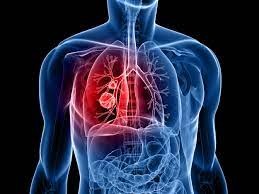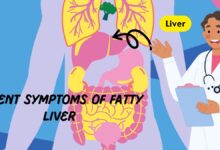Genetics of adjacent healthy tissue may be useful in identifying the recurrence of lung cancer
New study led by NYU Langone Health and its Perlmutter Cancer Centre suggests that rather than analyzing the tumors themselves, genetic data from seemingly healthy tissue next to lung tumors may be a better indicator of whether the cancer will recur after treatment.
According to the U.S. Centers for Disease Control and Prevention, lung adenocarcinoma, which originates in alveolar epithelial cells and makes up about one-third of all lung cancer cases in the country, is the subject of the current research. When tumors are surgically removed early in the course of the illness, most people recover; but, in around 30% of instances, cancer cells that were previously present return and may be fatal. Because of this, specialists have been looking for biomarkers, or recurrence predictors, for a long time in the hopes of guiding more aggressive initial therapy.
147 men and women receiving treatment for stage Ib lung cancer were included in the research. It looked at the usefulness of the transcriptome—the whole collection of RNA molecules that instruct cells on what kinds of proteins to produce. Eighty-three percent of the time, analysis of RNA taken from seemingly healthy tissue next to tumor cells correctly indicated that cancer will return, but only sixty-three percent of the time, RNA from the tumors themselves provided useful information.
“Our findings suggest that the pattern of gene expression in apparently healthy tissue might serve as an effective and until now elusive biomarker to help predict lung-cancer recurrence in the earliest stages of the disease,” Igor Dolgalev, PhD, co-lea
The study, which compares genetic material from tumors and surrounding tissue to determine whether or not they can predict recurrence, is the largest to date, according to Dolgalev, an assistant professor in the department of medicine at NYU Grossman School of Medicine and a member of the Perlmutter Cancer Center. It was published online in the journal Nature Communications on November 8.
Nearly 300 lung cancer patients’ tumor and healthy tissue samples were gathered by the research team for the study. After sequencing each sample’s RNA, the study’s researchers entered the information into an artificial intelligence system, along with the information on whether or not a recurrence happened within five years after surgery. The “machine learning” method was used by this application to create mathematical models that calculated the likelihood of recurrence.
The results showed that one particularly helpful predictor was the expression of genes linked to inflammation or increased immune system activity in nearby, seemingly normal lung tissue. According to the study’s authors, this defensive response might be an early indicator of illness and shouldn’t exist in tissue that is really healthy.
Hua Zhou, PhD, a bioinformatician at NYU Grossman and a member of the Perlmutter Cancer Center, co-lead author of the paper, stated, “Our results suggest that seemingly normal tissue that sits close to a tumor may not be healthy after all.” “Instead, escaped tumor cells might be triggering this unexpected immune response in their neighbors.”
Aristotelis Tsirigos, PhD, a cancer biologist and co-senior author of the research, said, “Immunotherapy, which strengthens the body’s immune defenses, might therefore help combat tumor growth before it becomes visible to traditional methods of detection.”
Tsirigos, a Perlmutter Cancer Center member and professor in the Department of Pathology at NYU Grossman, issues a warning, pointing out that the study was conducted backwards, employing patients that were previously known to have had a recurrence of the cancer to train the computer algorithm.
According to Tsirigos, who is also the head of NYU Langone’s Applied Bioinformatics Laboratories, the research team now intends to utilize the tool to prospectively estimate recurrence risk in patients who have just had treatment for early-stage lung cancer.







